Do you have a question about the Panasonic VIERA TH-L32E30Z and is the answer not in the manual?
Detailed instructions for safe handling of the power plug and cord.
Warns against opening the TV due to electrical shock hazards.
Emphasizes using manufacturer-approved stands or brackets for stability and safety.
Critical guidelines for installing the TV securely and safely, including stability.
Guides through plugging in the TV and initiating the channel search.
Instructions for powering on the TV and accessing the VIERA Connect portal.
How to launch the VIERA TOOLS menu and select features.
Explains different viewing modes like Dynamic, Cinema, Game, and Photo.
Details settings for backlight, contrast, brightness, colour, sharpness, and tint.
Fine-tunes colour balance and gamma curves for picture accuracy.
Options for Music, Speech, and User-defined sound profiles.
Steps for accessing and using the Digital TV tuning menu.
Steps for accessing and using the Analogue TV tuning menu.
Guides on creating, naming, and organizing favorite channel lists.
Process for automatically scanning and storing all available digital TV channels.
How to skip unwanted channels and edit their names or positions.
How to lock specific channels or AV inputs using a PIN.
Steps to reset all TV settings to their original factory defaults.
How to enable automatic software updates when the TV is in standby.
Guides on connecting a USB HDD for recording and playback.
Procedures for formatting a USB HDD and confirming its name.
Guides on inserting an SD card and formatting it for TV recording.
How to immediately record the current TV program.
Instructions for starting continuous recording for playback or pausing.
How to view photo thumbnails, sort them by folder, date, or month.
Guides on playing video titles and scenes, including preview options.
How to display and manage lists of recorded TV programs.
How to select and play music files from storage devices.
Explains DLNA compatibility and how to set up a media server.
Introduction to accessing internet services and websites via VIERA Connect.
Setting up network link options for controlling the TV via network equipment.
Steps to configure the TV for a wired LAN connection.
Setting up IP addresses and DNS servers for network connectivity.
Steps to connect to a wireless network via an access point.
How to display icons for available media servers on the network.
Steps to select a media server and browse/view files like photos.
A table summarizing features and compatibility with connected equipment.
How to synchronize power states between the TV and connected equipment.
How to pause and resume live TV broadcasts using a connected DIGA recorder.
Instructions for immediately recording the current program.
How to control connected devices like recorders and players using the TV remote.
How to switch audio output between connected home cinema systems and TV speakers.
A table showing which equipment can connect to which TV terminals.
Information on HDMI standards, features like ARC, and connection compatibility.
How to connect a PC, supported signals, and resolution details.
Information on compliant SD card types, formats, and usage precautions.
Details on USB HDD capacity, format, and connection requirements for recording.
Lists compatible photo file types, resolutions, and restrictions.
Details compatible video containers, codecs, and audio formats.
Lists compatible music file types and playback restrictions.
Addresses common screen problems like noise, no image, or distortion.
Covers problems related to no sound, low volume, or distorted audio.
Lists technical details for power, screen size, resolution, and audio output.
Details available terminals and supported PC signal formats.
Detailed instructions for safe handling of the power plug and cord.
Warns against opening the TV due to electrical shock hazards.
Emphasizes using manufacturer-approved stands or brackets for stability and safety.
Critical guidelines for installing the TV securely and safely, including stability.
Guides through plugging in the TV and initiating the channel search.
Instructions for powering on the TV and accessing the VIERA Connect portal.
How to launch the VIERA TOOLS menu and select features.
Explains different viewing modes like Dynamic, Cinema, Game, and Photo.
Details settings for backlight, contrast, brightness, colour, sharpness, and tint.
Fine-tunes colour balance and gamma curves for picture accuracy.
Options for Music, Speech, and User-defined sound profiles.
Steps for accessing and using the Digital TV tuning menu.
Steps for accessing and using the Analogue TV tuning menu.
Guides on creating, naming, and organizing favorite channel lists.
Process for automatically scanning and storing all available digital TV channels.
How to skip unwanted channels and edit their names or positions.
How to lock specific channels or AV inputs using a PIN.
Steps to reset all TV settings to their original factory defaults.
How to enable automatic software updates when the TV is in standby.
Guides on connecting a USB HDD for recording and playback.
Procedures for formatting a USB HDD and confirming its name.
Guides on inserting an SD card and formatting it for TV recording.
How to immediately record the current TV program.
Instructions for starting continuous recording for playback or pausing.
How to view photo thumbnails, sort them by folder, date, or month.
Guides on playing video titles and scenes, including preview options.
How to display and manage lists of recorded TV programs.
How to select and play music files from storage devices.
Explains DLNA compatibility and how to set up a media server.
Introduction to accessing internet services and websites via VIERA Connect.
Setting up network link options for controlling the TV via network equipment.
Steps to configure the TV for a wired LAN connection.
Setting up IP addresses and DNS servers for network connectivity.
Steps to connect to a wireless network via an access point.
How to display icons for available media servers on the network.
Steps to select a media server and browse/view files like photos.
A table summarizing features and compatibility with connected equipment.
How to synchronize power states between the TV and connected equipment.
How to pause and resume live TV broadcasts using a connected DIGA recorder.
Instructions for immediately recording the current program.
How to control connected devices like recorders and players using the TV remote.
How to switch audio output between connected home cinema systems and TV speakers.
A table showing which equipment can connect to which TV terminals.
Information on HDMI standards, features like ARC, and connection compatibility.
How to connect a PC, supported signals, and resolution details.
Information on compliant SD card types, formats, and usage precautions.
Details on USB HDD capacity, format, and connection requirements for recording.
Lists compatible photo file types, resolutions, and restrictions.
Details compatible video containers, codecs, and audio formats.
Lists compatible music file types and playback restrictions.
Addresses common screen problems like noise, no image, or distortion.
Covers problems related to no sound, low volume, or distorted audio.
Lists technical details for power, screen size, resolution, and audio output.
Details available terminals and supported PC signal formats.
| Screen Size | 32 inches |
|---|---|
| Resolution | 1920 x 1080 |
| Display Type | LCD |
| HDMI Ports | 4 |
| Power Consumption | 85 W |
| Aspect Ratio | 16:9 |
| Refresh Rate | 50 Hz |
| Brightness | 400 cd/m² |
| VGA Port | Yes |
| Component In | 1 |
| Composite In | 1 |
| Digital Audio Out | 1 (Optical) |
| Headphone Out | 1 |
| Built-in Speakers | Yes |
| Speaker Output | 10 W x 2 |
| Standby Power Consumption | 0.3 W |
| Wi-Fi | No |
| 3D | No |
| Smart TV | Yes |
| Weight | 9.5 kg |
| Viewing Angle | 178 degrees |
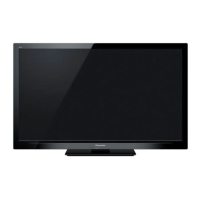
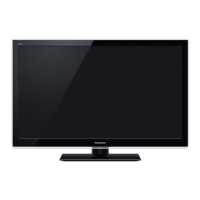




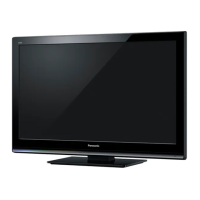
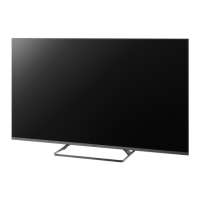
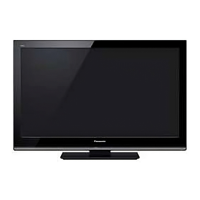

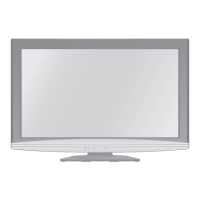
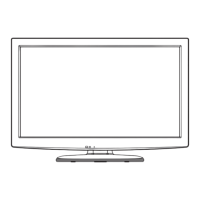
